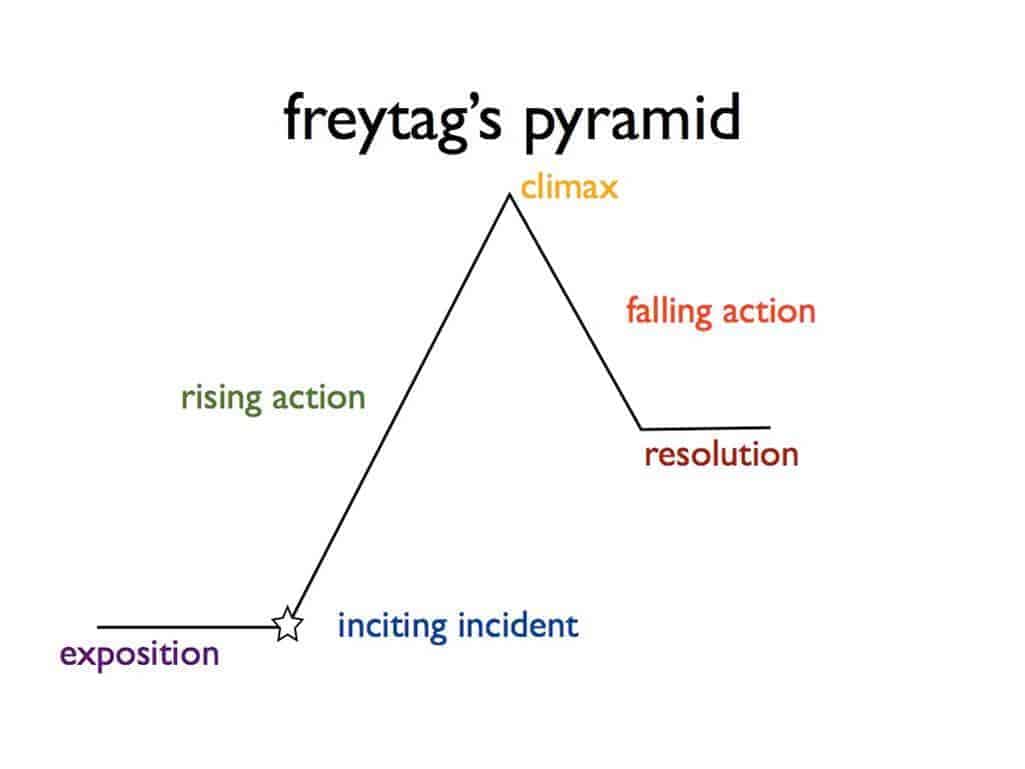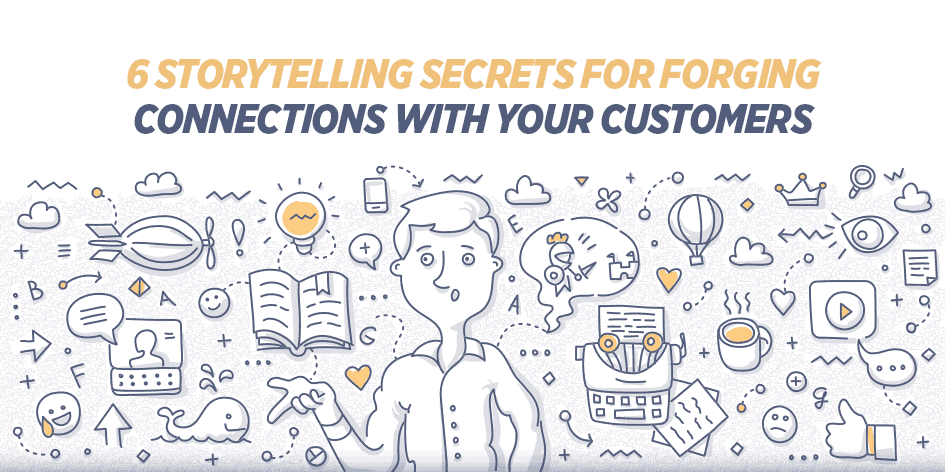Storytelling is as integral to digital marketing as pictures to a picture book.
You can have all the clever tweets, amazing hashtags, and beautifully styled Instagram photos you can come up with, but if there’s no cohesive brand story behind them, they won’t win you loyal followers.
Why? Because you can’t build a connection with a series of tweets, no matter how clever they are. And in the digital age, marketing is all about building connections with your customers.
If you’re lagging behind in the storytelling department, put these tips to work for your brand.
To tell a great story, start with the basics: Freytag’s Pyramid.
Think about every Hollywood blockbuster you’ve ever seen. They’re pretty formulaic, right? You know there will be a buildup to the climax of the movie, the hero will face a serious obstacle, then everything (or at least something) will work out and the film will come to a satisfying close.
We love to bemoan formulas because they’re so predictable. And yet, if you think about your favorite books, movies, or TV shows, they’re all built on a formula, no matter how well it may be hidden.
That formula is based on Freytag’s Pyramid, otherwise known as the dramatic structure. Gustav Freytag was a German novelist and playwright (a rather nationalistic one, incidentally) who constructed the pyramid as a result of his studies of Greek and Shakespearean tragedy.

Now, your Instagram story, 3-minute video, or Tweetstorm won’t have nearly as complex a story as a novel or movie.
However, you can still apply this formula to any story you’re trying to tell. Just use it as a guide.
Let’s say you’re making a brand awareness video, designed to introduce people to your brand. This is how you could outline it, according to the pyramid:
Exposition: Brief background about your company – who you are, what you do
Inciting incident: The problem your brand was founded to solve, a crisis in your founder’s life that led to the formation of the brand, etc.
Rising action: Development of your product or service
Climax: Your product/service launch, or explanation of your brand’s values, mission, and offerings
Falling action: How your product/service is helping your customers today
Resolution: Tie everything up! Link to your website or social media profiles, explain how customers can get in touch with you, etc.
You can modify this structure as needed, but if you really look closely at the brand stories that you admire, we’re willing to bet that they all follow Freytag’s Pyramid to some degree.
You can even use this structure for a product demo video. For something as clearcut as a product demo, your structure might look something like this:
- Pain point or problem that your product addresses
- Your product and how it addresses that pain point successfully with a demo
- Happy customer testimonials
Forge an emotional connection
Stories must create some sort of emotional connection in order to succeed.
The type of emotion you go for is up to you and what is relevant for your brand – it really doesn’t matter if you’re trying to evoke empathy, laughter, sadness, fear, or joy (although generally speaking, positive emotions will give potential customers a better feeling about your brand than negative ones.)
There are so many ways to do this. For one thing, you can create a fictional story, as brands do for their TV commercials, that illustrates your brand values or mission.
If you have a particularly powerful brand history – maybe your company has been in your family for generations, or your brand’s founder experienced a personal crisis, hardship, or epiphany that led to your brand’s founding – then focus on sharing that.
Get visual
There’s a reason that so many digital marketers are incorporating video into their marketing strategy these days.
It’s incredibly effective.
But video isn’t the only visual medium you can use to effectively tell your story. It can be as simple as including images in your blog posts or creating infographics to illustrate your points.
Try out Instagram Stories, or post photos and text to create a Twitter Moment.
Create a 360 video or virtual reality experience.
Not every business has the bandwidth to create something as resource-heavy as a 360-degree video or virtual reality experience.
However, these tools are incredible ways to tell your brand’s story in a truly revolutionary way: by immersing viewers right in the middle of the action.
You can see some of our favorite branded virtual reality experiences in this post, “The Immense Power That Virtual Reality Can Have for Your Brand.” They include this cool 360 video by TOM’S, the world-famous one-for-one shoe company. The video is a Virtual Giving Trip that lets viewers experience “where the other pair goes.”
Engage in story-building, rather than simply storytelling.
As Peter Minnium writes in Marketing Land, brands should be moving from a linear storytelling model – of the sort you’d see in most books or films – toward a story-building model.
While you might create a single piece of content using the linear model, your overall brand content must be based on story-building. That means that each piece of content you create helps build your brand’s narrative.
In order to do this well, of course, you need to know what your brand narrative is. What’s the overarching story behind your company? What are its goals, values, mission? What is its origin story? This takes some time to develop, and it may morph as your company evolves.
Be patient, and experiment with some small storytelling projects to get some quick wins.
Patience serves us well in nearly every endeavor, and digital marketing is no exception.
Effectively incorporating storytelling into your digital marketing efforts will not be an overnight fix for what ails them, be that low traffic numbers or low social engagement.
However, if you build upon it consistently, a storytelling approach will absolutely improve your engagement over time. One way to help yourself get over the hump is to work on some small storytelling projects – a single video, for example, or a cool infographic. Release them out into the world and see how they do.
Stay data-driven.
Data and storytelling may sound like diametrically opposed concepts, but they don’t have to be.
For one thing, including data in your blog posts can increase the chances that you’ll get inbound links, which in turn improves your search rankings on Google. It also earns you greater trust with your readers.
But being data-driven means much more than that. It means staying attuned to your metrics to see what’s working and what’s not.
For example, let’s say you’ve just written a lengthy opinion piece on Medium sharing your brand’s take on a current event. You craft a tweet to share the post with the Twitterverse, and send it out. The next day, or next week, you craft a slightly different tweet to share the post – maybe it uses emojis, or switches out a couple of power words.
Then you can look at the data to see which tweet performed better, and use that to inform how you share posts in the future.
Incorporating effective storytelling into your digital marketing will give your customers something more to latch on to than just your product or service. For more related tips, read “6 Tips for Creating Content That Converts.”




